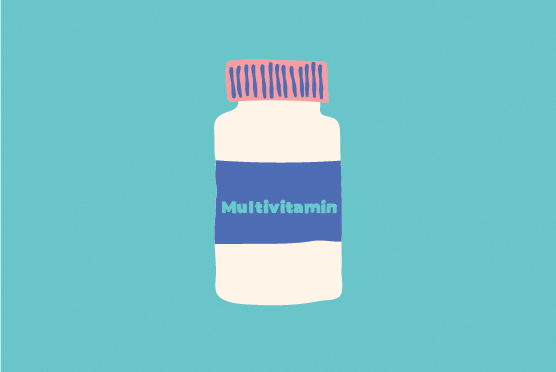Inside this article
As diagnoses of food hypersensitivity rise and more children than ever are being diagnosed with food allergies or intolerances, it is easy to see why parents are keen to recognise the signs and symptoms they should watch for regarding food allergies and intolerances.
In this blog you’ll find out;
- The difference between food allergy and food intolerance
- Common allergy and intolerance signs and symptoms
- Which tests can actually be used to diagnose allergy and intolerance (and which to avoid)
- Where to get more help if you think your child has an allergy or intolerance to a food
Food allergy vs Food intolerance
While food allergies and intolerances are regarded as hypersensitivities to components within food, they are very different. Despite this, they are often confused, as the symptoms of food allergies and intolerances can be similar.
Food allergy is a reaction from the body’s immune system. Its primary function is to protect us from harmful invaders like germs and other hazardous substances. In the case of food allergies, the immune system misidentifies a protein found in certain foods, such as milk protein, as a danger. This miscalculation prompts an immune response each time the food is consumed, resulting in the symptoms associated with food allergies (which will be detailed below).
Food intolerance generally arises when the body struggles to digest a specific food. This can happen for reasons such as a deficiency in the enzymes (think of them like mini scissors) needed for proper digestion. Unlike food allergies, food intolerance does not provoke an immune response. Instead, it can result in symptoms such as abdominal pain, bloating, or diarrhoea after consuming certain foods.
A frequent confusion among babies and children is between Cow’s Milk Protein Allergy (CMPA) and Lactose Intolerance. While CMPA involves an immune response to milk protein, lactose intolerance refers to difficulty digesting cow’s milk’s sugar (lactose).
Common symptoms of food allergy
The immune system is responsible for allergy symptoms. The immune system responds when the offending protein interacts with it (e.g., when consumed). This means that children with food allergies experience symptoms each time they consume the allergen.
The symptoms of a food allergy for your child will vary depending on the type of reaction. There are two categories of food allergies: immediate type (IgE-mediated), which causes symptoms shortly after eating—within minutes to 2 hours—and delayed type (non-IgE-mediated), where symptoms can appear 2 to 72 hours later. An indication that reactions are typically allergic is when they impact multiple body systems, which is frequently observed in cases of food allergy.
Here are the most common symptoms of food allergy, split by each type.
| Immediate – symptoms occur in minutes up to 2 hours | Delayed – symptoms occur between 2-72 hours later | |
| Skin | Hives (nettle rash, wheels), rash, itching, immediate eczema flare, redness and/or swelling | Persisting eczema that does not improve with skin treatment (may be widespread) , itching |
| Gut | Vomiting, diarrhoea, nausea | Reflux, vomiting, abdominal (tummy) pain, diarrhoea, constipation, excess mucus in poo, blood in poo |
| Respiratory | Sneezing, runny nose, coughing, wheezing, shortness of breath, hoarse cry | None – some parents describe a persistently sniffly baby or child. |
| Other | Anaphylaxis – a severe allergic reaction that needs urgent and immediate medical attention (999 stating ‘anaphylaxis) presenting with floppiness, collapse, breathing difficulties (such as those above like wheezing, hoarse voice or cry) | Refusal milk or food, Slow or faltering growth |
Common symptoms of food intolerance
Symptoms of food intolerances can overlap with food allergies, particularly those related to delayed food allergies. Symptoms of food intolerance may also exhibit a dose-response effect; for instance, symptoms become more severe as the quantity of the food consumed increases and tend to emerge more gradually in the hours following consumption. Common symptoms include abdominal and gut issues such as diarrhoea, constipation, abdominal cramps, and nausea. Occasionally, symptoms such as headaches, fatigue, and changes in skin or mood can also be associated with food intolerances.
Tests to diagnose food allergy and intolerances
Wanting answers about your child’s symptoms when you suspect a food allergy or intolerance is understandable; however, only specific tests will be beneficial. I always remind parents that these tests should be used alongside a child’s history. So, writing down everything you are concerned about, taking pictures of symptoms, and/or keeping a food and symptom diary can be very helpful for the professional assessing and diagnosing your child. Here are the common testing methods used, based on the type of food hypersensitivity suspected for your child.
Immediate type food allergy (IgE mediated)
Alongside a detailed history of your child’s reaction taken by an allergy specialist, tests that may be used to support a diagnosis include;Skin Prick Tests (looking for IgE antibodies)IgE blood tests (looking for IgE antibodies)Hospital food challenge (carefully introducing a child to the suspected allergen, under close medical supervision in a hospital setting)
Non-IgE mediated food allergy
There are no specific tests that can be used to ‘simply’ diagnose this type of food allergy. Diagnosis usually relies on a period of dietary exclusion e.g. 2-4 weeks of the suspected food, followed by reintroduction. The supporting health professional will be looking for symptoms to improve and resolve when the allergen is removed, and recur when reintroduced
Food intolerance
Specific tests e.g. hydrogen breath test, can be used to diagnose specific food intolerance such as a lactose intolerance, however many intolerances are diagnosed following the same approach used for non-IgE mediated food allergy e.g. removing the suspected trigger, and reintroducing it weeks later to observe for changes in symptoms of concern.
At home testing
Unfortunately, numerous products and tests are marketed to ‘diagnose’ allergies or intolerances, exploiting parental concerns regarding their child’s symptoms. Yet they lack robust validation for use in diagnosing these conditions. I urge you to refrain from spending money on these options, as they are not scientifically backed, may lead to unnecessary food exclusions, and, in many cases, will not support symptom resolution! These include;
- IgG tests
- Vega testing
- Kinesiology
- Hair samples
- Electrodermal Screening
Where to get more help
If you suspect your child has food allergies or intolerances, discuss them with your GP. Your GP should be able to refer you to a Paediatric Dietitian and/or Allergy Doctor. You can also access both of these professionals in the private sector.









